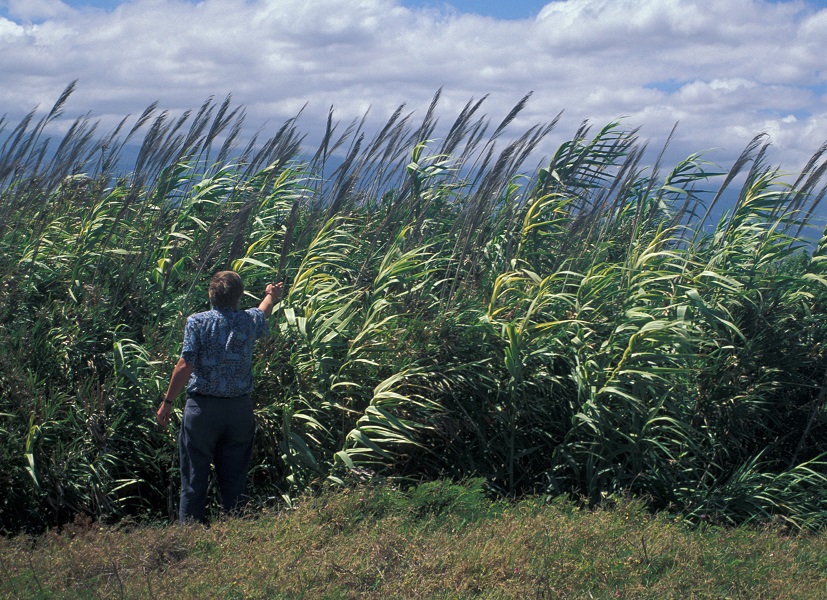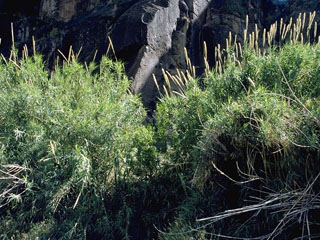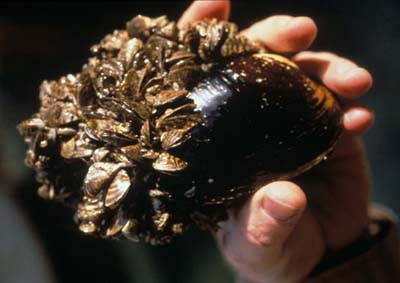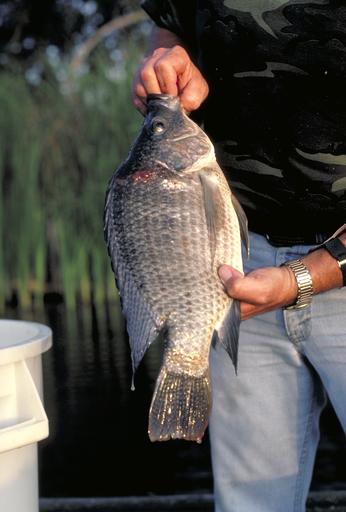How NOT to Manage Giant Reed
Tuesday, May 17th, 2016This is Passport to Texas
How would you deal with grass that’s gotten out of hand? Mow it? That works for turf grass, but not the invasive non-native grass called Arundo Donax, or giant reed.
It’s very tall—grows up to about 30 feet.
Not only is mowing nearly impossible, but using a machete or anything that breaks this gargantuan grass into pieces is ill-advised, says Monica McGarrity, who studies aquatic invasive for Texas Parks and Wildlife.
The way that this plant reproduces is by the canes—especially when they’re cut—by folks mowing or by nutria eating them. They spread downstream and they re-root and create new plants. It does spread by its rhizomes, but it can travel long distances if you cut it, mow it, and fragments get into the creek. Each fragment can create a new plant.
Its invasive nature is evident along rivers and streams; it outcompetes native plants and disrupts habitat. In addition, it’s a thirsty plant – not good for drought-prone Texas.
It uses a lot of water. It’s been shown to reduce flows, and it can cause a lot of erosion, and that can reduce the water quality in the stream. So, lots of ways that it can have a big impact on the system.
So what is the best way to manage giant reed? Monica McGarrity has the answer on tomorrow’s show.
Learn more about giant reed at texasinvasives.org.
The Sport Fish Restoration program supports our series.
For Texas Parks and Wildlife, I’m Cecilia Nasti.







 Passport to Texas is a
Passport to Texas is a  Passport to Texas is made available by:
Passport to Texas is made available by: